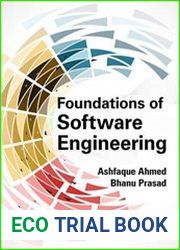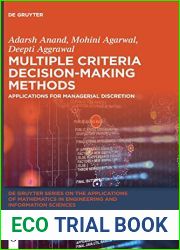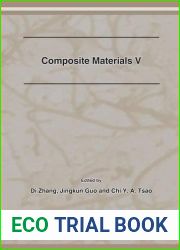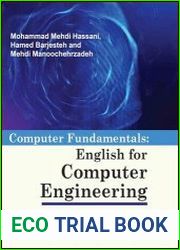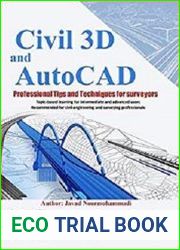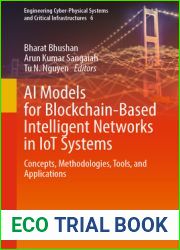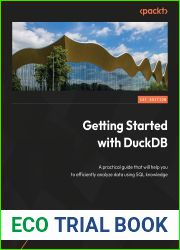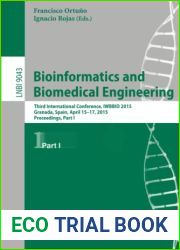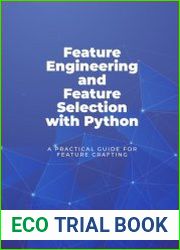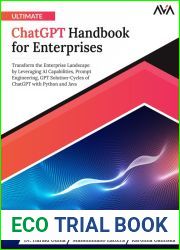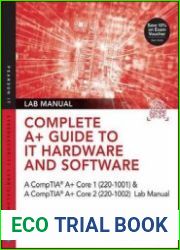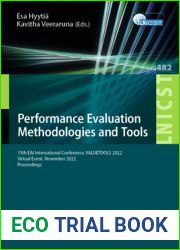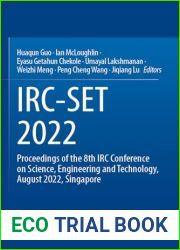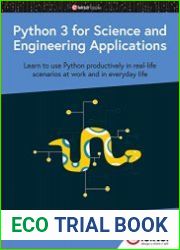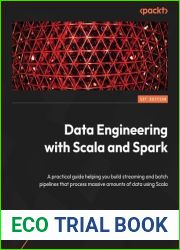
BOOKS - PROGRAMMING - Foundations of Software Engineering

Foundations of Software Engineering
Author: Ashfaque Ahmed, Bhanu Prasad
Year: 2016
Pages: 475
Format: PDF
File size: 10 MB
Language: ENG

Year: 2016
Pages: 475
Format: PDF
File size: 10 MB
Language: ENG

The book "Foundations of Software Engineering" offers a comprehensive approach to learning software engineering by focusing on its core and peripheral areas. Divided into 10 chapters, this book covers all aspects of software engineering, from requirements elicitation to maintenance and retirement. Each chapter is dedicated to a specific area of software engineering, providing in-depth coverage of the subject matter. Chapter 1: Requirements Elicitation In this chapter, readers will learn how to identify, analyze, document, and prioritize stakeholder needs and expectations to create a well-defined set of requirements. The authors emphasize the importance of understanding the needs of users and other stakeholders to ensure that the software meets their expectations. They discuss various techniques for requirements elicitation, including interviews, surveys, focus groups, and prototyping. Chapter 2: Object-Oriented Analysis and Design This chapter delves into the principles of object-oriented analysis and design, introducing the concept of objects, classes, and inheritance. Readers will learn how to apply these principles to create robust and maintainable software systems. The authors also cover design patterns and principles, helping readers understand how to structure their code for maximum reusability and flexibility.
Книга «Основы программной инженерии» предлагает комплексный подход к обучению программной инженерии, сосредоточив внимание на ее основных и периферийных областях. Разделенная на 10 глав, эта книга охватывает все аспекты разработки программного обеспечения, от выявления требований до обслуживания и вывода из эксплуатации. Каждая глава посвящена определенной области разработки программного обеспечения, обеспечивая глубокое освещение предмета. Глава 1: Выявление требований В этой главе читатели узнают, как идентифицировать, анализировать, документировать и определять приоритеты потребностей и ожиданий заинтересованных сторон для создания четко определенного набора требований. Авторы подчеркивают важность понимания потребностей пользователей и других заинтересованных сторон, чтобы гарантировать, что программное обеспечение соответствует их ожиданиям. Они обсуждают различные методы выявления требований, включая интервью, опросы, фокус-группы и создание прототипов. Глава 2: Объектно-ориентированный анализ и проектирование В этой главе подробно рассматриваются принципы объектно-ориентированного анализа и проектирования, вводятся понятия объектов, классов и наследования. Читатели узнают, как применять эти принципы для создания надежных и обслуживаемых программных систем. Авторы также описывают шаблоны и принципы проектирования, помогая читателям понять, как структурировать свой код для максимальной многоразовости и гибкости.
livre « Bases de l'ingénierie logicielle » propose une approche intégrée de la formation en ingénierie logicielle, en se concentrant sur ses domaines principaux et périphériques. Divisé en 10 chapitres, ce livre couvre tous les aspects du développement logiciel, de l'identification des besoins à la maintenance et au déclassement. Chaque chapitre traite d'un domaine spécifique du développement de logiciels, offrant une couverture approfondie du sujet. Chapitre 1 : Identification des exigences Dans ce chapitre, les lecteurs apprennent à identifier, analyser, documenter et hiérarchiser les besoins et les attentes des intervenants afin de créer un ensemble d'exigences clairement définies. s auteurs soulignent l'importance de comprendre les besoins des utilisateurs et d'autres parties prenantes afin de s'assurer que le logiciel répond à leurs attentes. Ils discutent de diverses méthodes pour identifier les exigences, y compris des entrevues, des sondages, des groupes de discussion et la création de prototypes. Chapitre 2 : Analyse et conception orientées objet Ce chapitre traite en détail des principes de l'analyse et de la conception orientées objet, introduit les concepts d'objets, de classes et d'héritage. s lecteurs apprennent comment appliquer ces principes pour créer des systèmes logiciels fiables et entretenus. s auteurs décrivent également des modèles et des principes de conception, aidant les lecteurs à comprendre comment structurer leur code pour un maximum de réutilisation et de flexibilité.
libro «Fundamentos de la Ingeniería de Software» ofrece un enfoque integral para la formación en ingeniería de software, enfocándose en sus áreas básicas y periféricas. Dividido en 10 capítulos, este libro cubre todos los aspectos del desarrollo de software, desde la identificación de requerimientos hasta el mantenimiento y la desactivación. Cada capítulo está dedicado a un área específica del desarrollo de software, proporcionando una iluminación profunda del tema. Capítulo 1: Identificación de requisitos En este capítulo, los lectores aprenderán a identificar, analizar, documentar y priorizar las necesidades y expectativas de los interesados para crear un conjunto de requisitos bien definido. autores subrayan la importancia de comprender las necesidades de los usuarios y otras partes interesadas para garantizar que el software se ajuste a sus expectativas. Discuten diferentes métodos para identificar requerimientos, incluyendo entrevistas, encuestas, grupos focales y creación de prototipos. Capítulo 2: Análisis orientado a objetos y diseño En este capítulo se examinan detalladamente los principios del análisis orientado a objetos y el diseño, y se introducen los conceptos de objetos, clases y herencia. lectores aprenderán a aplicar estos principios para crear sistemas de software confiables y mantenidos. autores también describen patrones y principios de diseño, ayudando a los lectores a entender cómo estructurar su código para la máxima reutilización y flexibilidad.
O livro «Os Fundamentos da Engenharia de Software» oferece uma abordagem completa da engenharia de software, com foco em suas áreas básicas e periféricas. Dividido em 10 capítulos, este livro abrange todos os aspectos do desenvolvimento de software, desde a detecção de requisitos até manutenção e descontinuidade. Cada capítulo é dedicado a uma área específica de desenvolvimento de software, fornecendo uma cobertura profunda do objeto. Capítulo 1: Detecção de requisitos Neste capítulo, os leitores aprendem como identificar, analisar, documentar e definir as prioridades das necessidades e expectativas dos interessados para criar um conjunto bem definido de requisitos. Os autores ressaltam a importância de compreender as necessidades dos usuários e de outros interessados para garantir que o software atende às suas expectativas. Eles discutem vários métodos para identificar os requisitos, incluindo entrevistas, sondagens, grupos de foco e a criação de protótipos. Capítulo 2: Análise orientada a objetos e projeto Este capítulo aborda os princípios da análise e do projeto orientado a objetos, introduz os conceitos de objetos, classes e herança. Os leitores aprendem como aplicar esses princípios para criar sistemas de software confiáveis e de manutenção. Os autores também descrevem modelos e princípios de design, ajudando os leitores a entender como estruturar seu código para a maior reutilidade e flexibilidade.
Il libro di base dell'ingegneria software offre un approccio completo all'ingegneria software, focalizzandosi sulle sue aree principali e periferiche. Suddiviso in 10 capitoli, questo libro comprende tutti gli aspetti dello sviluppo software, dall'individuazione dei requisiti alla manutenzione e alla disattivazione. Ogni capitolo è dedicato a una specifica area di sviluppo software, fornendo una profonda copertura dell'oggetto. Capitolo 1: Individuazione dei requisiti In questo capitolo, i lettori sapranno come identificare, analizzare, documentare e definire le priorità delle esigenze e delle aspettative delle parti interessate per creare un insieme ben definito di requisiti. Gli autori sottolineano l'importanza di comprendere le esigenze degli utenti e delle altre parti interessate per garantire che il software sia in linea con le loro aspettative. Discutono di vari metodi per identificare i requisiti, tra cui interviste, sondaggi, focus group e la creazione di prototipi. Capitolo 2: Analisi orientata agli oggetti e progettazione In questo capitolo vengono descritti i principi dell'analisi e della progettazione orientati agli oggetti e vengono introdotti i concetti degli oggetti, delle classi e dell'ereditarietà. I lettori impareranno come applicare questi principi per creare sistemi software affidabili e gestibili. Gli autori descrivono anche i modelli e i principi della progettazione, aiutando i lettori a capire come strutturare il proprio codice per ottimizzare la riutilizzazione e la flessibilità.
Das Buch „Grundlagen des Software-Engineerings“ bietet einen umfassenden Ansatz für die Ausbildung im Software-Engineering, der sich auf seine Kern- und Randbereiche konzentriert. Dieses in 10 Kapitel gegliederte Buch behandelt alle Aspekte der Softwareentwicklung, von der Anforderungsermittlung über die Wartung bis hin zur Stilllegung. Jedes Kapitel widmet sich einem bestimmten Bereich der Softwareentwicklung und bietet eine tiefe Abdeckung des Themas. Kapitel 1: Anforderungen identifizieren In diesem Kapitel lernen die ser, wie sie die Bedürfnisse und Erwartungen der Stakeholder identifizieren, analysieren, dokumentieren und priorisieren können, um einen klar definierten Satz von Anforderungen zu erstellen. Die Autoren betonen, wie wichtig es ist, die Bedürfnisse der Nutzer und anderer Stakeholder zu verstehen, um sicherzustellen, dass die Software ihre Erwartungen erfüllt. e diskutieren verschiedene Methoden zur Identifizierung von Anforderungen, einschließlich Interviews, Umfragen, Fokusgruppen und Prototyping. Kapitel 2: Objektorientierte Analyse und Konstruktion In diesem Kapitel werden die Prinzipien der objektorientierten Analyse und Konstruktion ausführlich behandelt und die Konzepte von Objekten, Klassen und Vererbung vorgestellt. Die ser lernen, wie sie diese Prinzipien anwenden können, um zuverlässige und wartbare Softwaresysteme zu erstellen. Die Autoren beschreiben auch Designmuster und -prinzipien und helfen den sern zu verstehen, wie sie ihren Code für maximale Wiederverwendbarkeit und Flexibilität strukturieren können.
Fundamentals of Software Engineering oferuje kompleksowe podejście do szkolenia inżynierii oprogramowania, koncentrując się na jego podstawowych i peryferyjnych obszarach. Ta książka, podzielona na 10 rozdziałów, obejmuje wszystkie aspekty rozwoju oprogramowania, od określenia wymagań po konserwację i likwidację. Każdy rozdział skupia się na konkretnym obszarze rozwoju oprogramowania, zapewniając głęboki zakres tematu. Rozdział 1: Wymagania identyfikacyjne W tym rozdziale czytelnicy dowiedzą się, jak zidentyfikować, przeanalizować, udokumentować i uszeregować potrzeby i oczekiwania zainteresowanych stron w celu stworzenia jasno określonego zestawu wymogów. Autorzy podkreślają znaczenie zrozumienia potrzeb użytkowników i innych zainteresowanych stron w celu zapewnienia, że oprogramowanie spełnia ich oczekiwania. Omawiają różne metody identyfikacji wymagań, w tym wywiady, ankiety, grupy skupienia i prototypowanie. Rozdział 2: Analiza i projektowanie zorientowane na obiekty Niniejszy rozdział zawiera zasady analizy i projektowania zorientowanych na obiekty, wprowadza pojęcia obiektów, klas i dziedzictwa. Czytelnicy dowiedzą się, jak stosować te zasady do tworzenia niezawodnych i utrzymywalnych systemów oprogramowania. Autorzy opisują również wzorce i zasady projektowania, pomagając czytelnikom zrozumieć, jak skonstruować swój kod dla maksymalnej wielokrotnego użytku i elastyczności.
Fundamentals of Software Engineering מציע גישה מקיפה להכשרת הנדסת תוכנה, תוך התמקדות בתחומי הליבה וההיקפים שלה. הספר מחולק ל ־ 10 פרקים, ומכסה את כל היבטי פיתוח התוכנה, החל בדרישות זיהוי וכלה בתחזוקה והוצאה משירות. כל פרק מתמקד בתחום מסוים של פיתוח תוכנה, המספק כיסוי עמוק של הנושא. פרק 1: דרישות זיהוי בפרק זה, הקוראים ילמדו כיצד לזהות, לנתח, לתעד ולתעדף את הצרכים והציפיות של בעלי המניות כדי ליצור מערכת דרישות מוגדרת ברורה. המחברים מדגישים את החשיבות של הבנת צורכי המשתמשים ובעלי עניין אחרים כדי להבטיח שהתוכנה תענה על ציפיותיהם. הם דנים בשיטות שונות לזיהוי דרישות, כולל ראיונות, סקרים, קבוצות מיקוד ואב טיפוס. פרק 2: ניתוח ועיצוב מונחה-עצמים פרק זה מפרט את העקרונות של ניתוח ועיצוב מונחה-עצמים, מציג את המושגים של עצמים, מעמדות וירושה. הקוראים ילמדו כיצד ליישם עקרונות אלה כדי לבנות מערכות תוכנה אמינות ומתחזקות. המחברים גם מתארים דפוסי עיצוב ועקרונות, ומסייעים לקוראים להבין כיצד לבנות את הקוד שלהם לשימוש מקסימלי וגמישות.''
Yazılım Mühendisliğinin Temelleri, temel ve çevre alanlarına odaklanarak yazılım mühendisliği eğitimine kapsamlı bir yaklaşım sunar. 10 bölüme ayrılmış olan bu kitap, gereksinimleri tanımlamaktan bakım ve hizmetten çıkarmaya kadar yazılım geliştirmenin tüm yönlerini kapsar. Her bölüm, konunun derinlemesine ele alınmasını sağlayan belirli bir yazılım geliştirme alanına odaklanmaktadır. Bölüm 1: Gereksinimlerin Belirlenmesi Bu bölümde, okuyucular açıkça tanımlanmış bir dizi gereksinim oluşturmak için paydaşların ihtiyaç ve beklentilerini nasıl tanımlayacaklarını, analiz edeceklerini, belgeleyeceklerini ve önceliklendireceklerini öğreneceklerdir. Yazarlar, yazılımın beklentilerini karşıladığından emin olmak için kullanıcıların ve diğer paydaşların ihtiyaçlarını anlamanın önemini vurgulamaktadır. Mülakatlar, anketler, odak grupları ve prototipleme dahil olmak üzere gereksinimleri tanımlamak için çeşitli yöntemleri tartışırlar. Bölüm 2: Nesne Yönelimli Analiz ve Tasarım Bu bölüm nesne yönelimli analiz ve tasarım ilkelerini detaylandırır, nesne, sınıf ve kalıtım kavramlarını tanıtır. Okuyucular, güvenilir ve sürdürülebilir yazılım sistemleri oluşturmak için bu ilkeleri nasıl uygulayacaklarını öğreneceklerdir. Yazarlar ayrıca tasarım kalıplarını ve ilkelerini tanımlayarak, okuyucuların kodlarını maksimum yeniden kullanılabilirlik ve esneklik için nasıl yapılandıracaklarını anlamalarına yardımcı olur.
تقدم أساسيات هندسة البرمجيات نهجًا شاملاً للتدريب على هندسة البرمجيات، مع التركيز على مجالاتها الأساسية والمحيطية. ينقسم هذا الكتاب إلى 10 فصول، ويغطي جميع جوانب تطوير البرمجيات، من تحديد المتطلبات إلى الصيانة ووقف التشغيل. يركز كل فصل على مجال محدد لتطوير البرمجيات، مما يوفر تغطية عميقة للموضوع. الفصل 1: تحديد المتطلبات في هذا الفصل، سيتعلم القراء كيفية تحديد احتياجات أصحاب المصلحة وتوقعاتهم وتحليلها وتوثيقها وتحديد أولوياتها لخلق مجموعة محددة بوضوح من المتطلبات. يؤكد المؤلفون على أهمية فهم احتياجات المستخدمين وأصحاب المصلحة الآخرين لضمان تلبية البرنامج لتوقعاتهم. يناقشون طرقًا مختلفة لتحديد المتطلبات، بما في ذلك المقابلات والاستطلاعات ومجموعات التركيز والنماذج الأولية. الفصل 2: التحليل والتصميم الموجهان نحو الكائن يفصل هذا الفصل مبادئ التحليل والتصميم الموجهين نحو الكائن، ويقدم مفاهيم الأشياء والفئات والميراث. سيتعلم القراء كيفية تطبيق هذه المبادئ لبناء أنظمة برمجيات موثوقة وقابلة للصيانة. يصف المؤلفون أيضًا أنماط ومبادئ التصميم، مما يساعد القراء على فهم كيفية هيكلة رمزهم لتحقيق أقصى قدر من إعادة الاستخدام والمرونة.
소프트웨어 엔지니어링의 기본은 핵심 및 주변 영역에 중점을 둔 소프트웨어 엔지니어링 교육에 대한 포괄적 인 접근 방식을 제공합니다. 10 개의 챕터로 나뉘어진이 책은 요구 사항 식별에서 유지 보수 및 해체에 이르기까지 소프트웨어 개발의 모든 측면을 다룹니다. 각 장은 특정 소프트웨어 개발 영역에 중점을 두어 주제에 대한 깊은 범위를 제공합니다. 1 장: 요구 사항 식별 이 장에서 독자는 명확하게 정의 된 요구 사항을 작성하기 위해 이해 관계자 요구 사항과 기대치를 식별, 분석, 문서화 및 우선 순위를 정하는 방법을 배웁니다. 저자는 소프트웨어가 기대를 충족시킬 수 있도록 사용자 및 기타 이해 관계자의 요구를 이해하는 것이 중요하다는 점을 강조합니 인터뷰, 설문 조사, 포커스 그룹 및 프로토 타이핑을 포함하여 요구 사항을 식별하는 다양한 방법에 대해 논의합니다 2 장: 객체 지향 분석 및 설계이 장은 객체 지향 분석 및 설계의 원리를 자세히 설명하고 객체, 클래스 및 상속의 개념을 소개합니다. 독자는 이러한 원칙을 적용하여 신뢰할 수 있고 유지 보수 가능한 소프트웨어 시스템을 구축하 저자는 또한 디자인 패턴과 원칙을 설명하여 독자가 재사용 성과 유연성을 극대화하기 위해 코드를 구성하는 방법을 이해하도록 도와
ソフトウェアエンジニアリングの基礎は、その中核と周辺分野に焦点を当てたソフトウェアエンジニアリングのトレーニングに包括的なアプローチを提供しています。本書は10章に分かれており、要件の特定からメンテナンスや廃棄まで、ソフトウェア開発のあらゆる側面を網羅しています。各章では、ソフトウェア開発の特定の分野に焦点を当てており、テーマの詳細なカバレッジを提供しています。第1章:要件の特定この章では、明確に定義された要件セットを作成するために、ステークホルダーのニーズと期待を特定、分析、文書化、優先順位付けする方法を学びます。著者たちは、ソフトウェアが期待に応えることを確実にするために、ユーザーや他の利害関係者のニーズを理解することの重要性を強調している。インタビュー、アンケート、フォーカスグループ、プロトタイピングなど、要件を特定するためのさまざまな方法について議論します。第2章:オブジェクト指向の分析と設計この章では、オブジェクト指向の分析と設計の原則について説明し、オブジェクト、クラス、継承の概念を紹介します。読者は、信頼性の高い保守可能なソフトウェアシステムを構築するために、これらの原則を適用する方法を学びます。また、デザインパターンや原理についても記述しており、読者はコードの構造を理解し、再利用性と柔軟性を最大限に高めることができます。
軟件工程基礎書提供了一種全面的軟件工程教學方法,重點是其核心和外圍領域。本書分為10章,涵蓋了軟件開發的各個方面,從需求識別到維護和退役。每個章節都涉及特定的軟件開發領域,為主題提供深入的照明。第一章:確定需求在本章中,讀者將學習如何識別、分析、記錄和優先考慮利益相關者的需求和期望,以創建一套定義明確的要求。作者強調了解用戶和其他利益相關者的需求的重要性,以確保軟件符合他們的期望。他們討論了識別需求的各種方法,包括訪談,調查,焦點小組和原型創建。第二章:面向對象的分析與設計本章詳細論述了面向對象的分析與設計原則,介紹了對象、類和繼承的概念。讀者將學習如何應用這些原則來創建可靠和可維護的軟件系統。作者還描述了設計模式和原理,幫助讀者了解如何構建代碼以實現最大的可重復性和靈活性。







